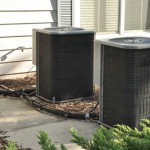Getting The Right Home Insulation

Insulation is a key component in home maintenance, and the practical reason is twofold. First of all, it’s a matter of comfort. In South Florida, home insulation determines how much cold air is let out, as well as how much hot air is let in. It’s also an economic concern (as well as an environmental one), as insufficient insulation will undoubtedly cause your energy bills to rise.
How Home Insulation Works
To find the right insulation for your home, you need to know about its “R-Value.” This is the standard measure of an insulating material’s resistance to heat flow, defined as heat transfer (difference in temperature) divided by a period of time. Simply put – higher R-Values translate to better insulation. And whether or not you know it, each room in your house has a recommended R-Value, so be sure to check with your contractor or maintenance/repair man on whether you have the right one.
Different Types of Insulation
When finding the right home insulation, another factor to consider is the type of insulation. As a jumping off point, here are the types utilized in homes accredited by the nonprofit Energy Star:
Batt Insulation
- What: Made of fiberglass or another mineral fiber , which are then fitted into blankets of different thicknesses.
- Where: Installed within walls to fill in any gaps or crevices.
Blow-In Insulation
- What: Made of cellulose or fiberglass that is blown in with a hose.
- Where: Completely and evenly fills the walls in an attic.
Sprayed/Injected Foam Insulation
- What: Synthetic insulation that is generally composed of polystyrene and/or polyurethane foam that is expanded or fashioned into large sheets after manufacture. It is also available as a spray foam.
- Where: Can be injected in basements, crawlspaces, and walls outside. As a sprayable foam, it can also be used to fill insulation cavities anywhere throughout the house.



